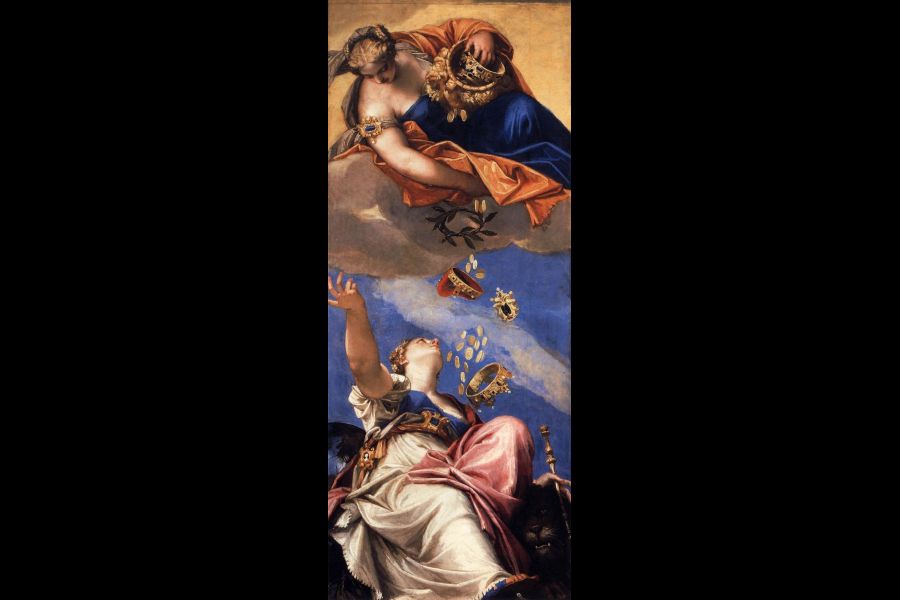In February 2020, at the Louvre, the major Leonardo da Vinci exhibition was in its final days.
The Mona Lisa remained separate, at the far end of her usual permanent gallery, behind a protective shield and distanced from the crowd pressing forward to take photos.
The onlookers had their backs to one of the most superb paintings at the Louvre, “The Wedding Feast at Cana” by Veronese, considered with Titian and Tintoretto, to be an outstanding artist of Venice’s Golden Age.
This enormous 32-foot work is a prime example of Veronese’s skill at weaving together pageantry, spectacle, religion, history, architecture, music, costume, figure studies, composition and colour. He was a bravura artist painting big, bold and decorative.
Venice was at its 16th-century height as a mercantile empire, the third-largest state in Europe and the richest. Commercial self-interest was a foundation of its national ideology. But so was myth in a society needing origin stories for its self-identity and reassurance as a “chosen people.”
It was a city built on water, 1,000 years old, believed to be founded by miracle, governed by providence and inviolable. Its collective survival depended on efficient authoritarian government, conformity, pageantry and ritual for continuity and harmony.
Many of its greatest paintings equate Venice with the Olympian gods of classical Greek and Roman mythology. In Veronese’s “Juno Showering Gifts on Venice,' the gifts are gold.
Juno (Greek Hera), wife of Jupiter (Zeus), rewards Venice (Venus) with gold coins, bejewelled gold crowns, the corno ducale (doge’s horn-like bonnet) and a laurel wreath, symbolizing power and peace. Gold represents dignity as well as moral power.
The doge wore robes made from gold thread. Artists worked with gold dust and flakes of gold. There was gold in Venetian glass. The façade of the Ca d’Oro was gilded with gold leaf fixed on its surface. Of the Venetian obsession with gold, Petrarch wrote “… behold what men will do for the thirst of gold.”
In Veronese’s painting, Juno leans over to watch Venice as she drops her gifts. A receptive Venice acknowledges the gifts, the sceptre of governance in her hand and the head of the lion, attribute of St. Mark, under her raised knee and hand.
There is circular volume, heft, yet refinement, in the large scale of the seductive bodies and fashionable satin garments.
Veronese’s renown as a brilliant colourist is apparent in his delicate handling of blue, yellow, orange, pink and silvery white. The image speaks to luxury, to material value, to an ideal of tradition and most importantly, to wise rule sanctified by divine authority.
Penny-Lynn Cookson is an art historian and former lecturer at the University of Toronto. See her upcoming series on “La Serenissima – Venice in Art and History,” Thursdays, 11 a.m. Feb. 17 to March 24, on Zoom from the RiverBrink Art Museum in Queenston.
Correction: In “Eye for Art” on Feb. 3, the headline about the painting by Pietro Longhi should have said “Il Ridotto” not “The Magpie.”










